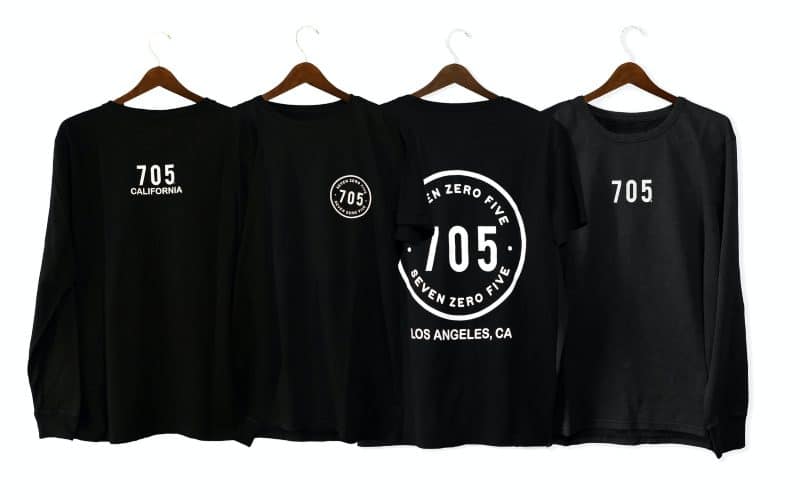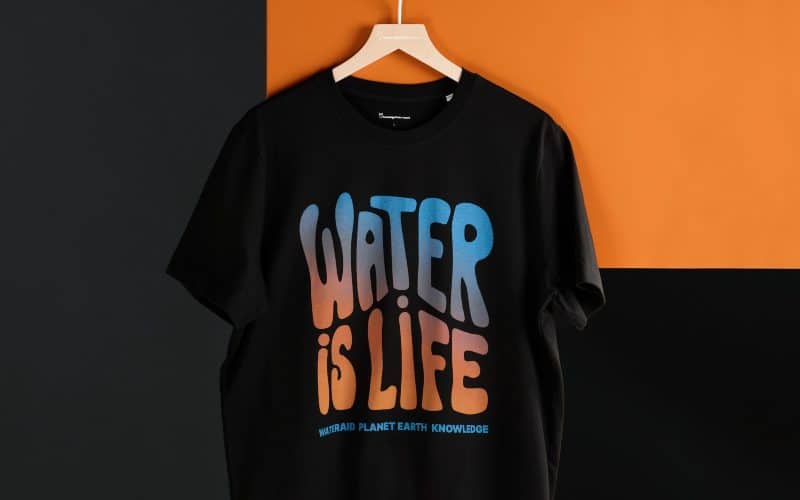Are plastisol transfers and screen printing the same thing? This question comes up more often than you’d think, and today we would like to set the record straight once and for all.
Plastisol transfers and screen printing are printed the same way but have different methods of application to the garment; Screen printing is applied directly to the garment and is ideal for large orders. Plastisol transfers are screenprints applied to individual transfers and are better for smaller orders.
If you struggle to choose between these two t-shirt printing methods or are just curious about the whole process, you have come to the right place. This article will discuss all the differences between plastisol transfers and screen printing to help you decide which method will work for you.
Plastisol Transfers Vs. Screen Printing

To explain the difference between plastisol transfers and screen printing, we decided to compare the two methods. We’ll take an in-depth look at both by discussing the following;
- How It Works
- Pros & Cons
- Step-By-Step Guide To Making T-Shirts
Plastisol Transfers
First up, plastisol transfers are almost the same as transfers papers (except for the ink), where the design is applied to paper first and then transferred from the paper onto the t-shirt.
How It Works
Using plastisol transfers is a relatively straightforward process. The first step is to place the plastisol transfer paper under a screen on a screen-printing machine. A grain (sand-like) is spread across the paper to prevent the design from blurring.
The plastisol ink is printed directly onto the plastisol paper (not the product), then you will align the t-shirt on the heat press machine, which is used to transfer the design from the paper to the t-shirt.
Pros & Cons Of Plastisol Transfers
| ProsConsYou can align your t-shirts easily on the heat press machine. | You can’t print photos. |
| You can repeat the same (or similar) design on t-shirts made from various materials such as polyester, cotton, and nylon. | You can’t print halftones. |
| Extremely durable (compared to transferred printing). | Not ideal for large orders because every garment needs its paper printed. |
| There are no minimums with plastisol transfers which means you can print several t-shirts, all with different designs. This is great for customizing sports jerseys when you need to change numbers and names. | Not as profitable as screen printing. |
Step-By-Step: Creating A T-Shirt Using Plastisol Transfers

Making a custom t-shirt using plastisol transfers is very easy. To make your own t-shirt, follow the step-by-step guide below:
Step 1: Use a 100% cotton t-shirt in any color you prefer.
Step 2: Set your heat press to the manufacturer’s recommended heat setting.
Step 3: Align your t-shirt on the bottom plate of the heat press.
Step 4: Place the plastisol heat transfer, three fingers below the collar or lower if you prefer, with the printed side facing down.
Step 5: Slowly lower the top part of the heat, press onto the plastisol transfer, and lock it in place until the timer goes off.
Step 6: Release and lift the top immediately as the timer rings, peel off the plastisol transfer, and voila, you’re done!
Screen Printing
Screen printing (or silk screening) has some interesting history starting hundreds of years ago when the Chinese invented the method, and back then, they used silkscreens (hence the name silk screening).
How It Works
Screen printing has advanced tremendously over the years, and today it involves applying ink through screens onto various items, including t-shirts, flyers, hats, pens, business cards, and more. However, screen printing is much more complex than plastisol transfers. The operation requires chemicals such as emulsion, ink thinner, emulsion remover, and dehaze.
The process also requires tape, scrubbers, films +/- 20 screens (different sizes), plastisol inks (various colors), and additional equipment such as a light machine (to burn screens), a washout booth (to clean and create screens), a conveyor belt dryer and a flash dryer (to dry the screens), a dark room (to store screens), and a screen-printing machine to print the designs.
Pros & Cons Of Screen Printing
| Pros | Cons |
| Multiple printing options such as single or multi-colored designs. | Requires a minimum order to be efficient. |
| Fabric versatility – can print on various materials. | Setup is quite time-consuming. |
| Great for very large orders. | Can print only one item at a time. |
| You can make a good profit using the screen-printing method. | Requires additional equipment and accessories. |
| You can continue printing continuously by only changing the shirts and the ink when it runs out. | This is a messy operation and requires regular cleanups. |
Step-By-Step: Creating A T-Shirt With Screen Printing

Creating a custom t-shirt using the screen-printing method is more complex than using plastisol transfers. To make your own t-shirt, follow the step-by-step guide below:
Step 1: Construct a wooden frame (sizes can be 16” X 16”; 12” X 12”; 7” X 7”) using reclaimed wood or wood from your local hardware store.
Step 2: Attach 110 mesh fabric to your frame with a staple gun (make sure to apply the mesh under as much tension as possible; the tighter, the better. Trim off any excess mesh.
Step 3: Using a squeegee, apply a smooth coat of prepared photo emulsion to the frame(s).
Step 4: Place your screens in a dark room to dry and prevent them from curing.
Step 5: Setup your exposure lighting.
Step 6: Create transparency masks by printing your design on transparent sheets.
Step 7: Once the photo emulsion is completely dry, align your transparencies backward onto your frames and secure them by placing glass sheets on top of them (extending past the frame).
Step 8: Switch on your exposure lighting and allow the emulsion to cure.
Step 9: Once cured, you will see a color difference, and your image will appear much clearer. Wash out the lighter areas with cold water and use a fine-bristled brush to clear all the uncured emulsions.
Step 10: Hold your screen(s) up to a light and look through it to see if the edges are clear and clean and that the image areas are clean.
Step 11: Wrap the frame(s) using duct tape to protect it from the printing ink but leave a small room around the image. No part of the frame should be exposed (back or front).
Step 12: Align the screen on the shirt and pour some ink onto the screen’s top section.
Step 13: Use a squeegee to stroke the ink down to cover the entire screen. For a thicker application, apply additional strokes.
Step 14: Wash your screen(s) with cold water when you are done printing and store them away for future use.
Conclusion
As you can see, plastisol and screen printing are the same type of printing, but the applications are different. We hope we have answered the question and made your decision easier. Happy printing!
Bryan E. Robinson is the former owner of TshirtGrowth. He has sold t-shirts since 2006 through dropshipping, screen printing, vinyl printing, DTG, Print on Demand, and more. Bryan has created his own t-shirt designs through Photoshop, Canva, and other platforms, as well as worked with freelancers to create many of his designs. Besides t-shirts, Bryan has over 18 years of experience in online marketing with eCommerce, B2B SaaS, B2C products, and more.


